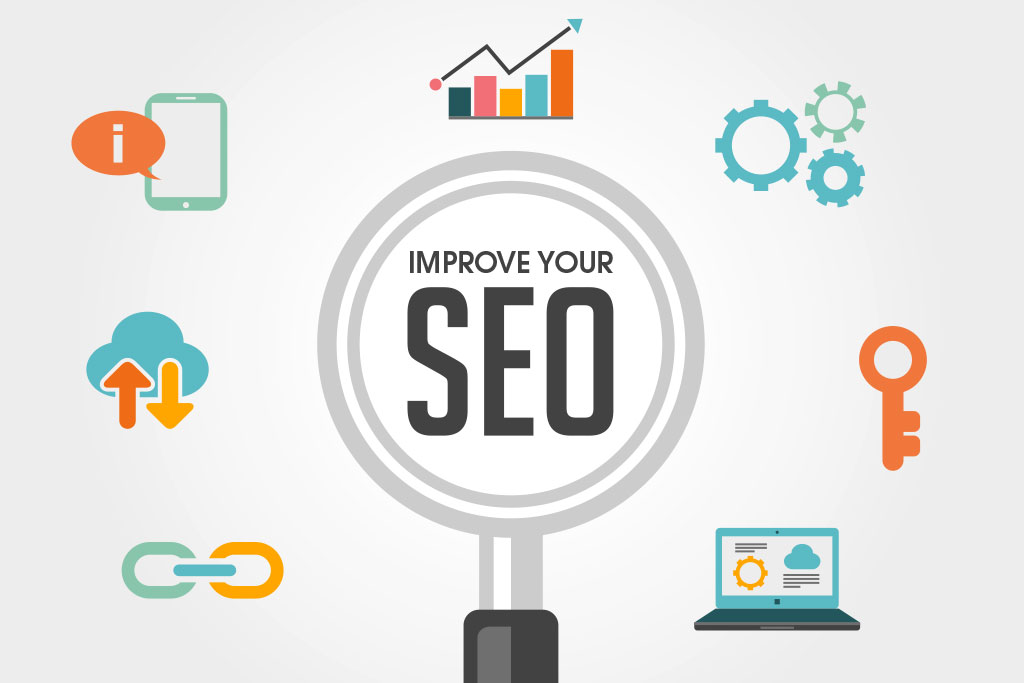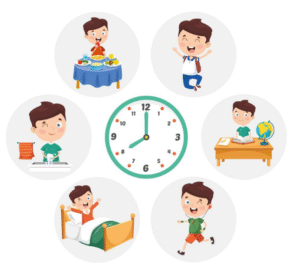
Simple SEO Guide: Get More Visitors to Your Website

Want more people to find your website on Google? This guide shows you easy ways to make that happen. You don’t need to be a tech expert – just follow these simple steps.
Why SEO Helps Your Business
Last year, I helped a bakery get 300% more website visitors using basic SEO tips. They went from 50 visitors per month to over 1,500 visitors. Most importantly, they got way more customers without spending money on ads.
Here’s what you need to know: most people use Google to find things online, and 75% never look past the first page of results. If your website doesn’t show up on page one, people won’t find you. However, with the right steps, you can beat bigger companies and get customers who want what you sell.
Make Your Website Fast
Google likes fast websites and punishes slow ones. Therefore, making your site load quickly should be your first job. Most people expect websites to load in under 3 seconds, and every extra second loses you visitors.
To check your speed, go to Google PageSpeed Insights and type in your website address. You want a score of 90 or higher on phones. If your score is lower, here’s how to fix it.
First, make your pictures smaller using free tools like TinyPNG. A big 2MB photo should become 200KB or less. Next, ask your web host to turn on GZIP compression – most good hosts do this already. Then, delete any plugins you don’t use because each one can slow your site down. Finally, if you pay less than $10 per month for hosting, think about upgrading because cheap hosting is usually slow.
Here’s a real example: one client’s photo website took 8 seconds to load, which made people leave right away. After we made the pictures smaller and got better hosting, it loaded in just 2 seconds. As a result, way fewer people left the site immediately, and the business got more customers.
Make Your Site Work on Phones
More than half of all Google searches happen on phones now. Google looks at your phone version first when deciding where to rank your site. So if your website doesn’t work well on phones, you’re missing lots of potential customers.
Testing is easy: open your website on your phone right now. Can you easily tap buttons without hitting the wrong thing? Can you read the text without zooming in? Do contact forms work smoothly? If any of these are problems, you need to fix them.
The best approach is responsive design, which means your site adjusts to any screen size. Make sure buttons are big enough to tap easily. Keep pop-ups small on phones because they’re annoying on tiny screens. Also, make your text big enough to read without zooming – at least 16 pixels.
Organize Your Website Well
Your website should be organized like a well-arranged store where everything is easy to find. This helps both visitors and Google understand what your site offers.
Good web addresses make a difference. Instead of messy URLs like yoursite.com/page1?id=12345, use clean ones like yoursite.com/blog/seo-tips. These are easier to remember and share.
Link your pages together smartly. When you write about related topics, link to other pages on your site. For example, if you mention “email marketing” in a blog post, link to your email marketing service page. This keeps people on your site longer and helps Google understand how your pages connect.
Find the Right Keywords
You don’t need expensive tools to find good keywords. Start by writing down 10 problems your customers have or services they need. These become your keyword ideas.
Next, type each topic into Google and look at what appears in the dropdown suggestions. These come from real searches people do, so they’re very valuable. Also check the “People also ask” boxes and “Related searches” at the bottom of results pages.
Look at what type of content ranks for each keyword. Are the top results how-to guides, product reviews, or something else? This shows you what kind of content you need to create.
Here’s an example: a fitness trainer found that “home workouts” gets 50,000 searches per month, which sounds great. But “15-minute home workouts for busy moms” had less competition and brought better customers because it targets specific people with specific needs.
Create Helpful Content
The best content solves real problems for real people. Start with attention-grabbing headlines that promise to fix something. Then show you understand their situation. Explain how your solution helps them. Finally, tell them exactly what to do next.
Longer content often ranks better because it can cover topics thoroughly. Blog posts between 1,500-2,500 words usually do well. Service pages need at least 300-500 words. About pages should be 500-800 words to build trust.
But here’s the secret: helpful content matters more than length. An 800-word post that perfectly answers someone’s question will always beat a 3,000-word post that doesn’t help much. Focus on being useful first.
Write Good Titles and Descriptions
Your page titles are like headlines in search results, so they need to grab attention. A good formula is: Main Keyword + Benefit + Your Brand Name. For example, “Easy SEO Tips That Doubled My Traffic | Proven Methods | YourBusiness.”
Page descriptions don’t directly affect rankings, but they make people want to click your result. Keep them under 160 characters and include your main keyword naturally. Add a clear benefit and tell people what to do. For example: “Learn 7 simple SEO tricks that increased our client’s website visitors by 400% in 6 months. Step-by-step guide with examples. Start today!”
Use Headers Correctly
Headers organize your content like a book outline. Use one H1 tag per page with your main keyword – this tells Google what the page is about. Then use H2 tags for major sections and H3 tags for smaller topics within each section.
For example, a dog training article might have an H1 like “Complete Dog Training Guide for Beginners.” Then H2s for big topics like “Basic Commands” and “House Training.” Under each H2, use H3s for specific things like “Teaching Sit” and “Teaching Stay.”
Optimize Your Pictures
Most people upload pictures wrong and miss easy SEO benefits. Start with good file names – instead of IMG_1234.jpg, use chocolate-chip-cookies-recipe.jpg to tell search engines what the picture shows.
Alt text helps both SEO and people who can’t see images. Describe what’s in the picture simply. Instead of just “dog,” write “golden retriever puppy playing in backyard.”
Size your pictures correctly. Big homepage images should be 1920×1080 pixels but compressed to under 500KB. Blog pictures work well at 1200×675 pixels and under 200KB. This gives good quality without slowing your site.
Get Other Sites to Link to You
When other websites link to yours, Google sees this as a vote of confidence. However, focus on earning good links, not buying cheap ones that can hurt your rankings.
One good method is finding resource pages. Search for “your topic + helpful resources” to find pages that list useful tools and articles. If you have something genuinely helpful, politely suggest adding it to their list.
Another approach is broken link building. Find broken links on relevant websites, create content that could replace the broken page, then suggest your content as a replacement. You’re helping them fix a problem while earning a link.
Local businesses can partner with other local companies. Write helpful articles for each other’s websites and share content on social media. This builds relationships while improving SEO.
When asking for links, be personal and helpful. Mention something specific you liked about their content, only suggest your content if it truly adds value, and keep your message brief and friendly.
Local SEO for Local Businesses
If you serve customers in your area, local SEO can bring you lots more business. Start with your Google Business Profile – fill out every section completely and keep it updated.
Include your exact business name, complete address, phone number, business hours (including holidays), a 150-word description with keywords, business categories, and add 3-5 new photos monthly.
Respond to every review within 24 hours. Ask happy customers for reviews, but don’t offer rewards for them. Handle negative reviews professionally – show you care about fixing problems.
Create content about your local area. Write about local events, mention neighborhood names, and talk about local partnerships. This helps Google understand you’re relevant to local searches.
Target location-specific keywords instead of broad terms. Instead of competing for “pizza,” target “best pizza downtown [your city]” or “family restaurant [your neighborhood].” These have less competition and attract ready-to-buy customers.
Track Your Progress
Use free tools like Google Analytics and Google Search Console to see what’s working. Focus on organic traffic growth, how long people stay on your site, which pages get the most visitors, and whether people take action after visiting.
Create a simple monthly report tracking total website visitors from Google, your top 10 keywords, new keywords you’re ranking for, and any technical problems you found and fixed. This keeps you focused on what matters most.
Avoid Common Mistakes
Don’t create pages with very little content – pages under 300 words rarely rank well. Don’t put the same content on multiple pages because this confuses Google. Don’t try to rank for too many keywords on one page – focus on one main topic per page.
Make sure your site loads in under 3 seconds. Optimize for mobile users since most searches happen on phones. Fix broken links because they hurt user experience. Give every page a unique, descriptive title.
Don’t buy cheap links from sketchy websites – Google can penalize your site for this. Focus on both getting links from other sites and linking between your own pages. Get links from related businesses, not random websites.
Simple Monthly Tasks
Every month, publish 2-4 helpful blog posts that answer real customer questions. Check your Google Search Console for any problems or opportunities. Respond to all business reviews promptly. Update old content based on what’s working now. Work on earning 2-3 good links through relationships and helpful content.
Start Today
SEO isn’t about tricking Google – it’s about creating the best experience for people looking for what you offer. Focus on making your site fast and mobile-friendly, creating genuinely helpful content, building real relationships, and being patient because SEO results take time.
The bakery I mentioned earlier now shows up first for “custom birthday cakes [their city]” and gets over 20 orders monthly from their website. It took 6 months of steady work, but now their SEO brings in customers automatically every day.
Pick one thing from this guide and do it this week. Small, steady improvements will get you more customers while your competitors are still paying for ads. The best time to start was 6 months ago, but the second-best time is right now.
What’s the first SEO task you’ll tackle today?
















Post Comment